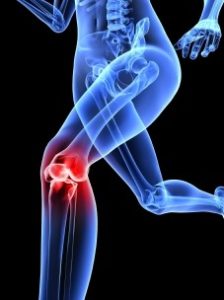Jumper’s Knee is a tendon injury often seen in athletes. It occurs where the tendon attaches to bone, usually involving the attachment of the kneecap tendon to the lower kneecap pole. The term Jumper’s knee refers to functional stress overload due primarily to jumping.
Jumper’s knee is caused by repetitive stress on the patellar or quadriceps tendon during jumping. This condition is generally specific to athletes, particularly those who participate in jumping sports like basketball, volleyball, or high or long jumping. It is occasionally found in athletes of non-jumping sports like soccer, weight lifting and cycling. Risk factors include: gender, greater body weight, being bow-legged or knock-kneed, having an increased angle of the knee, having an abnormally high kneecap or an abnormally low kneecap, and limb-length inequality.
Several studies have shown ESWT to be an effective treatment for patellar tendinopathy. One study performed a 2-3 year follow-up of patients treated with ESWT. 90% of patients rated the results as Excellent or Good, 10% of patient rated the results as Fair, and 0% of patients rated the results as Poor. Ultrasonographic examination showed a significant increase in the vascularity of the patellar tendon and a trend of reduction in the patellar tendon thickness after ESWT as compared to conservative treatments. Wang CJ, Ko JY, Chan YS, Weng LH, Hsu SL. Extracorporeal shockwave for chronic patellar tendinopathy. Am J Sports Med. 2007;35(6):972–8.
Make An Appointment
